This blog entry represents a day trip into the Pisgah National Forest near Brevard, North Carolina to find and photograph Galearis spectabilis, also known as Showy Orchis:
I had been told about this location late last year, and wanted to document the growth stages of this beautiful orchid. While we were there, we also saw several oddly-colored Trillium flowers.
On March 21, 2013, I made a trip into the Pisgah NF to see if there was any sign of the plants emerging from the forest floor. Unexpectedly, I found the ground partially covered with snow:
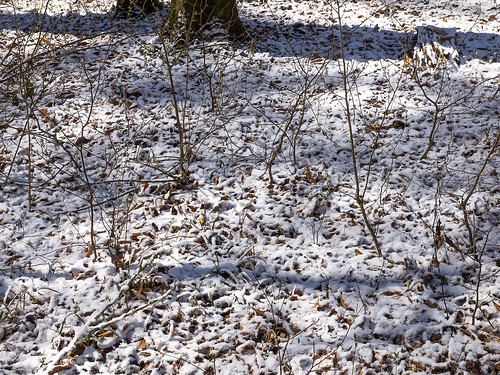
Although I was tempted, I did not root around in the snow to try to find signs of sprouting orchids — I figured it was much too early for that. Any respectable orchid plant would still be snugly situated under the leaf litter.
A few weeks later, on April 12, 2013, I returned to the site to find a couple of dozen orchid plants newly emerged from the forest floor — some coming up just beside last year’s seed capsules:
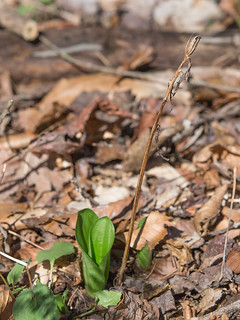 |
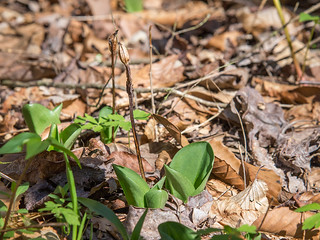 |
In addition, I found several Trillium plants already in bud in and among the newly sprouting Showy Orchis plants. Here is an image (sorry, but the Trillium is out of focus) of the two species side-by-side:
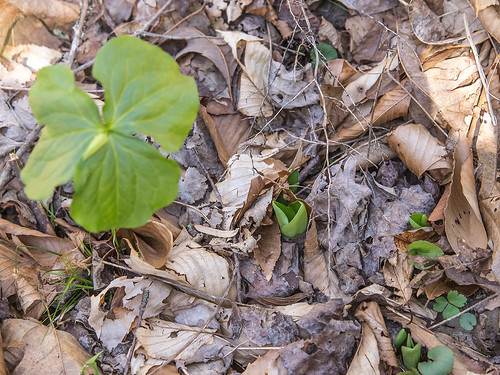
On April 20, I made another visit to check the status of the orchids. Here is what I found — many orchid plants which were in tight bud like the ones in the images below:
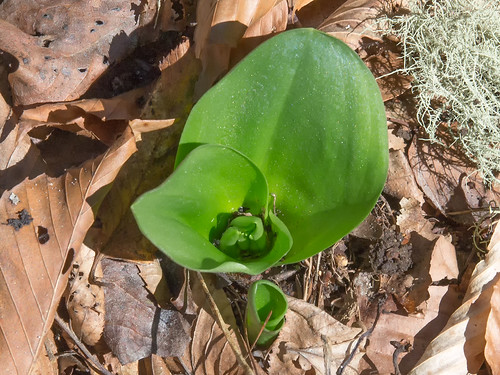
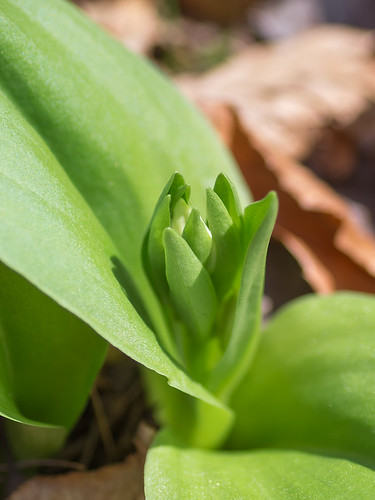
The most recent trip to the site was on April 26, 2013, where we found several plants in full bloom. I was excited to find several color variations in the flowers — some having a lighter magenta “hood”, whereas other plants showed flowers of the more typical color, a darker magenta “hood” and bright white lip. I even found one plant that showed a pinkish lip:
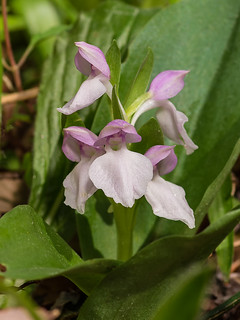 |
 |
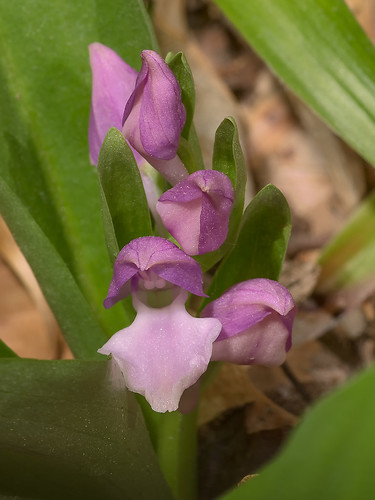
Although some of the orchids were in full flower, many more were in bud, giving us a sneak peek at the color to come:
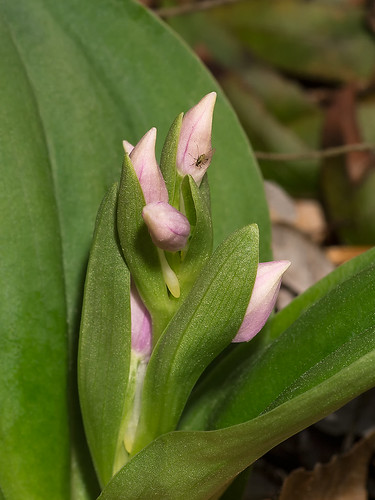
As we were photographing the Showy Orchis flowers, we kept seeing several flowering Trillium plants. Some of these flowers were the typical dark red/maroon of Trillium vaseyi or Vasey’s Trillium, but the plants were significantly smaller that what I was used to seeing for this species, being only slightly more than 1 inch (1.5 cm) wide. Typically I will see flowers up to 3 inches (7 cm) wide:
 |
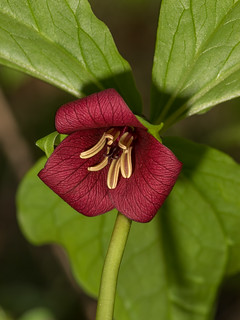 |
Among these dark-flowered Trillium plants, we were also seeing some plants with bright white flowers:
 |
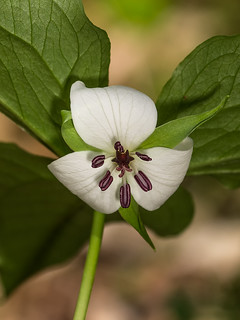 |
These look an awful lot like Trillium rugelii or Southern Nodding Trillium, which grows in the area, but the deeply textured petals and dark stamens and ovary reminded me more of a white Trillium vaseyi. I admit to knowing very little about our native Trillium species. However, I do love to photograph them and will go out of my way to visit a site where they are supposed to be blooming.
In addition to these dark red-flowered plants and the bright white-flowered plants, we were seeing other color variations, such as white and cream-colored flowers with red spots and streaks as well as solid, cream-colored flowers:
 |
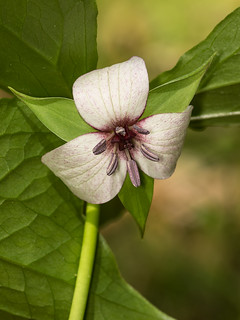 |
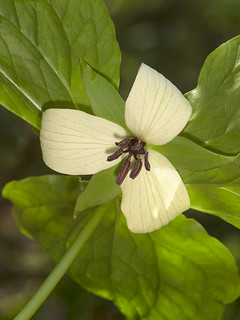 |
 |
We even saw a lightly-colored flower with a bright red ovary:
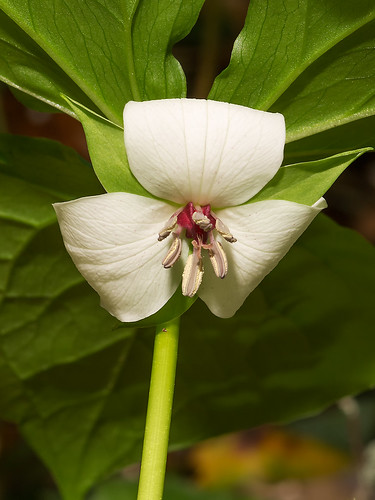
If you, the reader, have any comments or thoughts as to what species these odd Trillium plants represent, please comment below or send me an email. I’d really like to know more about them and to be able to properly label the images.
Well, this represents the end of another wonderful day trip into the mountains. Our region is just loaded with interesting wildflowers, and spring time is the best time to see them in bloom. I’m really fortunate to find myself in the Southern Appalachian Mountains, and I spend as much time there, communing with nature, as I can fit into my life…
— Jim
===========================================================================
Updated: May 5, 2013 after a subsequent re-visit to the Pisgah National Forest near Brevard, North Carolina.
===========================================================================
When I was at this Showy Orchis location around April 27, 2013, there were some plants in full bloom, but most of the plants just showed buds and no open flowers. On May 4, 2013, I joined a few flickr friends at the Pisgah National Forest Ranger Station, and we headed off to find and photograph more open flowers at this site. When we arrived, we could already see many blooming plants and much variability in the color of the flowers. I have never seen a pure white flowered one (although I have heard of it occuring), but we did find one cluster of plants with flowers that were “almost” white:
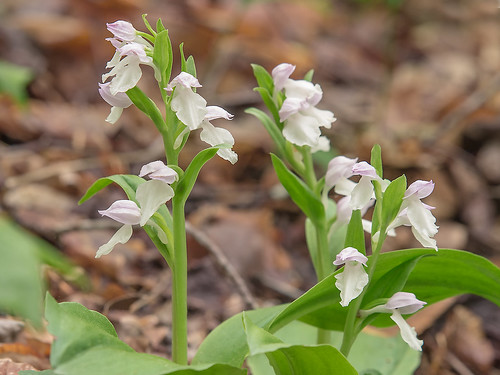
As expected, we did find many plants that exhibited the typical two-color flowers, with the “cap” being pinkish-purple and the lip being white:
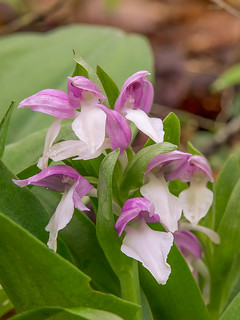 |
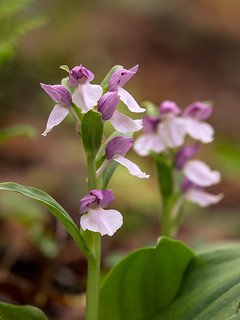 |
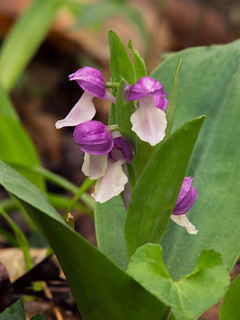 |
 |
In addition, I found a few plants whose lip was tinted with purple rather than being bright white:
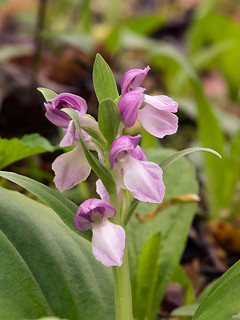 |
 |
One particular area hosted a few larger clumps of plants that were in bloom, looking much like a beautiful bouquet of flowers:
 |
 |
I’ve been to locations where I had to hike for miles just to find a few plants, but these several dozen plants were just next to the forest service road, and they were easily accessible to a driver of a 4-wheel drive vehicle. This is definitely one area on my list to visit next year…
— Jim

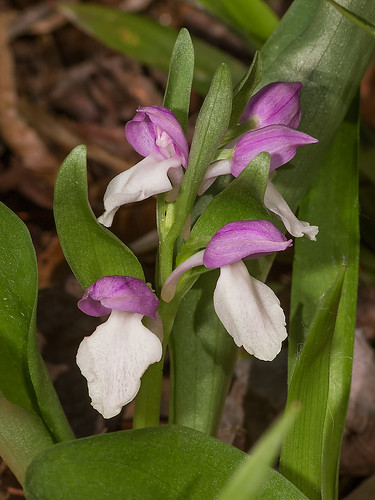
0 Responses
It seems some Trillium just refuse to read the books, or follow the protocols. Sounds like a great day of “botanizing”.
Jim, Your trillium photos look like T. vaseyi and T. rugelii and hybrids between the two and possibly some T. erectum influence in the mix. GREAT photos as usual. Your shot yesterday of Isotria verticillata is the best I’ve ever seen of this species.
Really nice, Jim! I think the red trilliums are my favorite. The colors really pop!
Wonderful blog Jim!
Exceptional photography, as always!!
Hey Jim – that’s a neat series of Trillium photos! The more I look at that red trillium the more I tend to lean towards it being the red morph of T. rugelii. T. vaseyi typically has very long stamens and the filaments exceed the length of the ovary. Your specimen has short filaments and relatively short stamens. If it is the red morph of T. rugelii, then you apparently have both color forms in that population. That might explain the intermediate color form. The only T. rugelii that I have seen up this way is the white morph. Only a guess, but the small flower size for vaseyi that you mention and the short stamens makes me suspect. Another possibility is that it is a hybrid complex. Regardless, an interesting local population there! Best, Jim.
Fantastic Jim. I always have a great time in the field with you.
I have a North Carolina plant from Pinnacle Mtn Nursery, that is an hybrid of T. cernuum x erectum. The flower is maroon and is hidden under the large leaves. The opposite, erectum x cernuum, can be found where the flower is above the leaves and is white.
Echoing Jim Petranka above, when I follow the key in Case & Case (1997) – most of photos you show of the Trillium population key out pretty unambiguously to T. rugelii. The only serious departure is anther sac coloration. At least, that’s what I thought until I read their entry on T. rugelii. It looks like they found the very same population as you!
“In the Pisgah National Forest near Brevard, North Carolina, we have found several obvious hybrid swarms between Trillium rugelii and T. vaseyi. Many of these possess beautifully colored petals, often bicolored.” (pg. 139)
This weekend at Pisgah I found a few T. rugelii plants with interesting colors and I do saw some T. vaseyi nearby. Looks like I can also found some really helpful info from your blog!